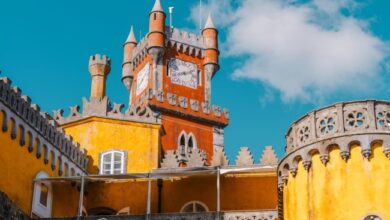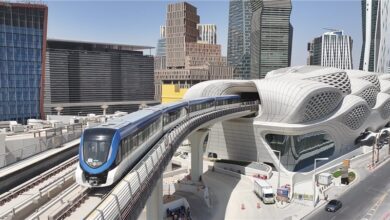The Modern Traveler’s Guide to Experiencing Dubai Beyond the Skyscrapers
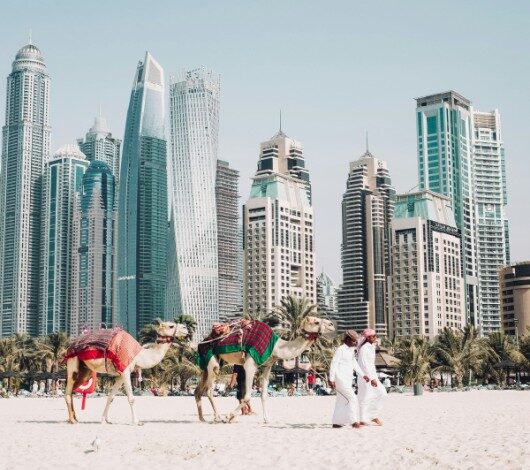
The city’s record-breaking buildings and sparkling skyline have become part of what makes Dubai special. But there is more to Dubai than the Burj Khalifa and Palm Jumeirah. Most visitors do not experience it, but it is a city full of culture, history, and unexpected experiences that show what makes this city so unique. Book your tickets to Dubai with Flydubai flights and experience the city’s numerous attractions with ease, thanks to their low pricing and excellent service.
Wander Through Old Dubai’s Historic Quarters
The Al Fahidi Historical Neighborhood is a great place to start your real Dubai trip. The classic wind-tower architecture will take you back to the 1890s. Art galleries, museums, and cultural facilities that demonstrate Emirati history can be discovered in these small streets. The Dubai Museum, which is in the Al Fahidi Fort, tells the story of how the city changed from a pearling village to a worldwide hub.
Take a classic abra water taxi across Dubai Creek for only a few dirhams. This will link you to the city’s marine commerce history. The five-minute ride between Deira and Bur Dubai gives you views you won’t see from a luxury boat. You can see wooden dhows still sailing these ancient waterways, transporting cargo exactly as they did centuries ago.
Immerse Yourself in Aromatic Souks
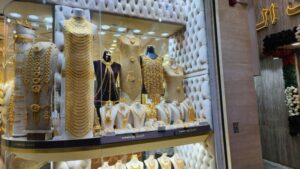
The Gold Souk and Spice Souk in Deira are the best examples of Dubai’s commercial history. These busy marketplaces are different from sterile retail malls because they engage all of your senses. As you go past shops full of saffron, frankincense, and other unusual spices, traders will give you samples and tell you tales. The neighboring perfume souk shows you authentic Arabian aromas and the art of oud blending, which is a one-of-a-kind Middle Eastern experience.
The Textile Souk is a must-see. It has vibrant textiles from India, Iran, and other places that create a spectrum of hues. You may buy traditional kanduras or abayas here. You’ll learn about the cultural importance of Emirati apparel while also helping local businesses.
Discover Desert Culture Beyond Dune Bashing
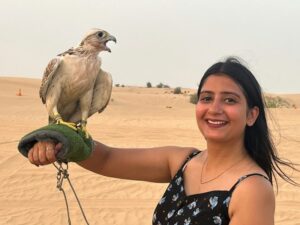
Desert safaris are popular, but look for ones that provide real Bedouin experiences. You can explore traditional skills like weaving, pottery, and falconry in historic villages. These immersive experiences show you how resourceful and strong people had to be to survive in the Arabian desert before oil transformed this region.
If you want a real local experience, go to Al Marmoom for camel racing. This old-fashioned sport shows how deeply Dubai is connected to its desert legacy. Robotic jockeys have taken the position of youngsters, but the races are still exciting and important to the culture.
Savor Authentic Emirati Cuisine
Instead of going to international restaurant chains, try Emirati food at local restaurants. At places like Al Fanar Restaurant or Arabian Tea House, you can get machboos (spiced rice with meat), luqaimat (sweet dumplings), and harees (wheat and meat porridge). These foods convey tales about the trading routes, creativity, and hospitality that are important to Emirati culture.
Community eateries in places like Satwa and Karama provide amazing food from the Indian subcontinent, Iran, and the Philippines. This shows that Dubai is a melting pot where more than 200 nationalities live.
Experience Contemporary Emirati Arts
Alserkal Avenue in Al Quoz is now the best arts region in the Middle East. There are plenty of galleries, design studios, and creative spaces in this industrial district that show off the work of up-and-coming Emirati and regional artists.
The Jameel Arts Center and Dubai Opera put on world-class shows and exhibits that break down common misconceptions about the culture of this region.
Practical Tips for Authentic Exploration
You can also book your tickets with a flag carrier like Saudi Airlines to have a premium experience if you’re traveling from Saudi Arabia. Once you are there, use the RTA Dubai app to help you learn about the efficient metro system. This is an affordable way to see neighborhoods.
When you go to historical sites and religious locations, dress modestly to show respect for the local culture. Learn how to say hello in Arabic. People in the area will appreciate the effort and frequently reply with warmth and kindness.
Go during the milder months (November to March) to enjoy strolling tours and outdoor markets. Many cultural places let people enter for free or for a small fee, so everyone can have real experiences.
Conclusion
The tales of its people, the smell of spices in old marketplaces, and the warm welcome that millions of people get while recognizing its rich history are what make Dubai really special, not its tallest buildings. If you go off the beaten path, you’ll find a Dubai that few tourists see, one that’s far more satisfying than any picture of the skyline.
